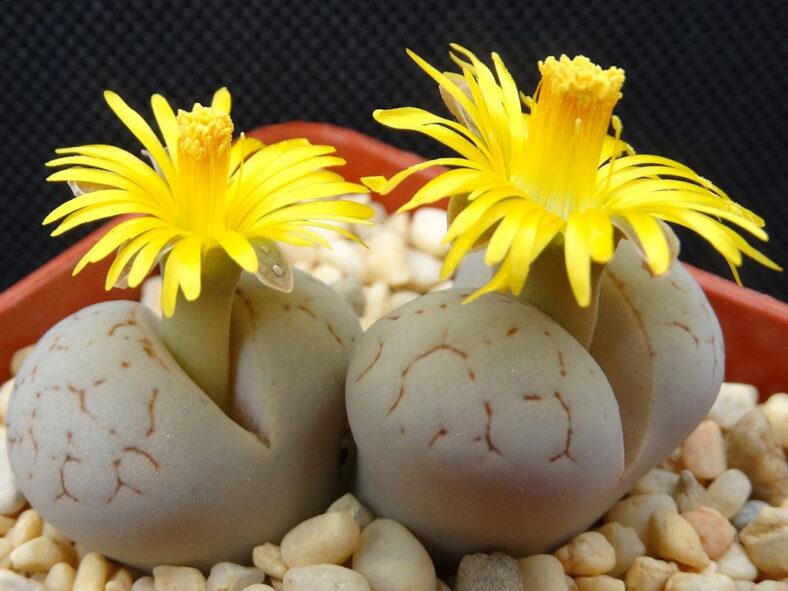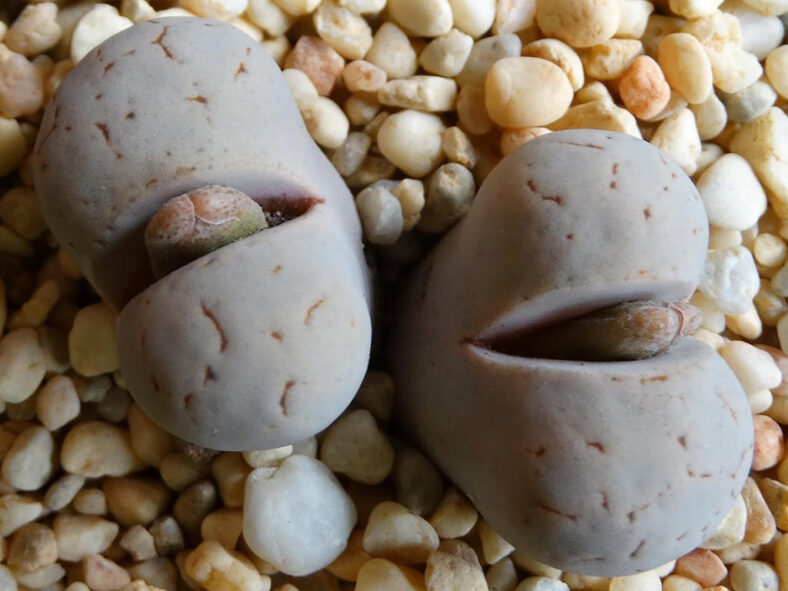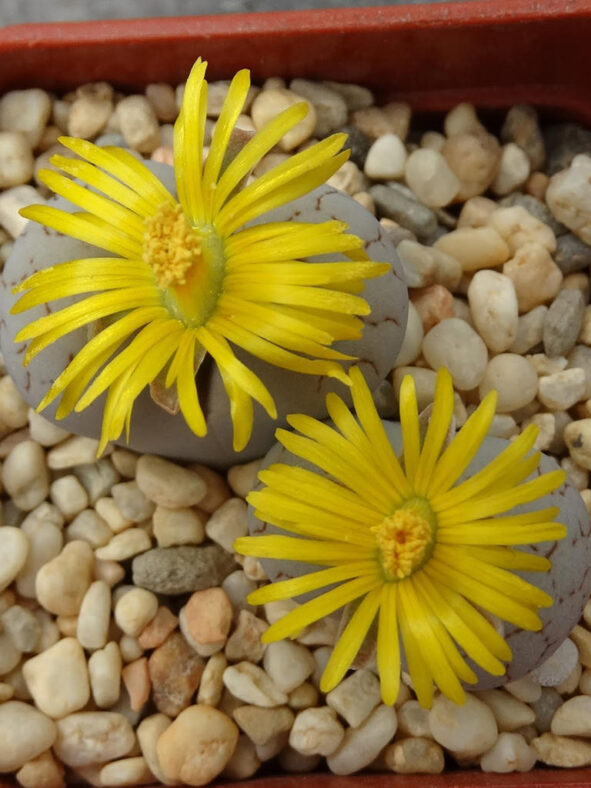Lithops ruschiorum var. lineata is not recognized as a separate variety and is treated as a synonym of Lithops ruschiorum. It differs from the typical form of Lithops ruschiorum by having more clearly visible markings on its bodies.
Scientific Name
Lithops ruschiorum var. lineata (Nel) D.T.Cole
Synonym(s)
Lithops lineata
Scientific Classification
Family: Aizoaceae
Subfamily: Ruschioideae
Tribe: Ruschieae
Genus: Lithops
Etymology
The varietal epithet "lineata" (pronounced "lin-ee-AY-tuh") means "lined". It refers to the more conspicuous markings on the upper surface of the bodies of this plant compared to the typical form of Lithops ruschiorum.
Origin
Lithops ruschiorum var. lineata is native to Namibia. It occurs from Rocky Point to the Angolan border.
Description
Lithops ruschiorum var. lineata is a dwarf succulent that forms clumps of two-lobed bodies that consist of plump, opposite, fused leaves with a central fissure. Typically, it grows in groups of 5 to 6 bodies, though it can occasionally produce larger clumps of up to 30 bodies. The bodies are greyish-yellow with some red to reddish-brown lines in slightly depressed grooves at the upper surface of the convex lobes. They can grow up to 1.6 inches (4 cm) tall and 0.8 inches (2 cm) wide at the fissure.
In the fall, Lithops ruschiorum var. lineata produces solitary, yellow flowers that emerge from the fissure between the leaves. The flowers can reach a diameter of 1.2 inches (3 cm). The fruits are 5-locular capsules that contain tiny, brown seeds.

How to Grow and Care for Lithops ruschiorum var. lineata
Light: A sunny windowsill where the plant receives 4 to 5 hours of direct sunlight during the early part of the day and partial shade during the afternoon is the perfect spot. You may place the plant on the balcony or in the garden from spring to fall.
Soil: Lithops ruschiorum var. lineata thrives best in soil that will drain quickly. Use a commercial potting mix for succulents, or make your own.
Temperature: High temperatures are not a problem for this plant as long as there is plenty of fresh air, but it is not a cold-hardy succulent. It is hardy in USDA Plant Hardiness Zones 10a-11b, which have average annual extreme minimum winter temperatures ranging from 30°F to 50°F (-1.1°C to 10°C).
Watering: Since this plant has a specific yearly growth cycle, it is essential to water only during certain stages, but it is also important to keep the soil dry at other stages of its growth. How often you need to water Lithops ruschiorum var. lineata depends on how quickly the soil dries out. Stop watering during the winter to allow the old leaf pair to dry out and the new pair to develop.
Fertilizing: As long as you repot this plant every two years, it does not require any fertilizer.
Repotting: Although this plant can thrive in the same pot for decades, it is beneficial to repot it occasionally to provide more space. The repotting can be done at any time during the growing season, but the best time for repotting is at the beginning of that season.
Propagation: Lithops ruschiorum var. lineata is primarily propagated from seeds sown in summer. However, if you have a multi-headed plant, it can also be easily propagated by division.
Learn more at How to Grow and Care for Lithops.
Toxicity of Lithops ruschiorum var. lineata
Lithops ruschiorum var. lineata is non-toxic and safe to have around children and pets.
Links
- Back to genus Lithops
- Succupedia: Browse succulents by Scientific Name, Common Name, Genus, Family, USDA Hardiness Zone, Origin, or cacti by Genus
Photo Gallery
Click on a photo to see a larger version.


